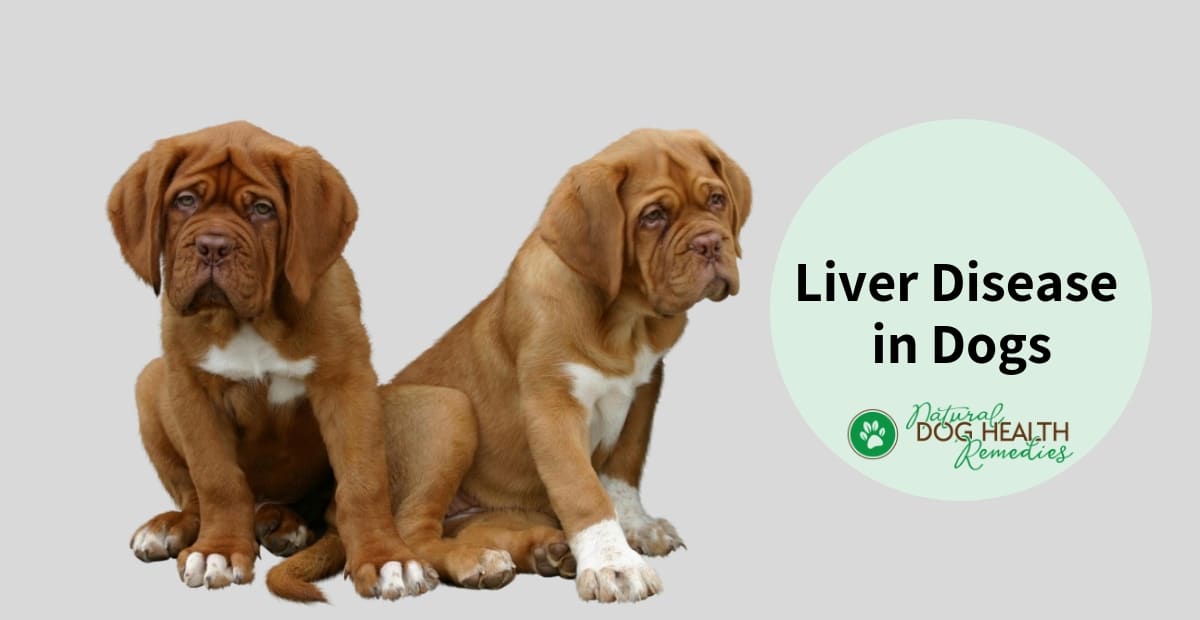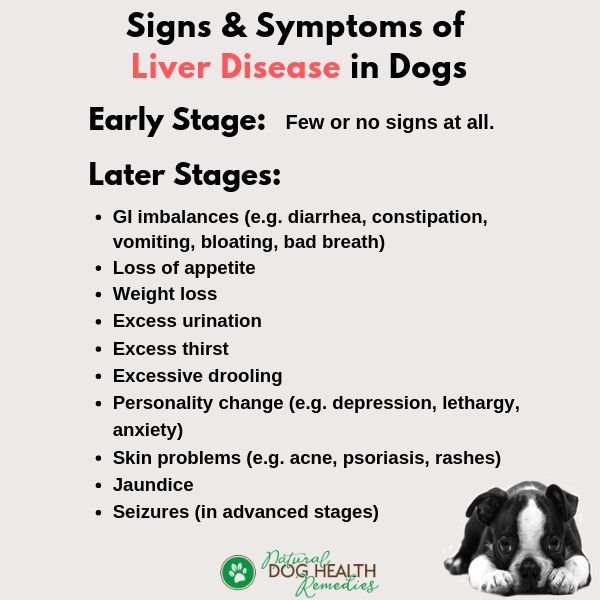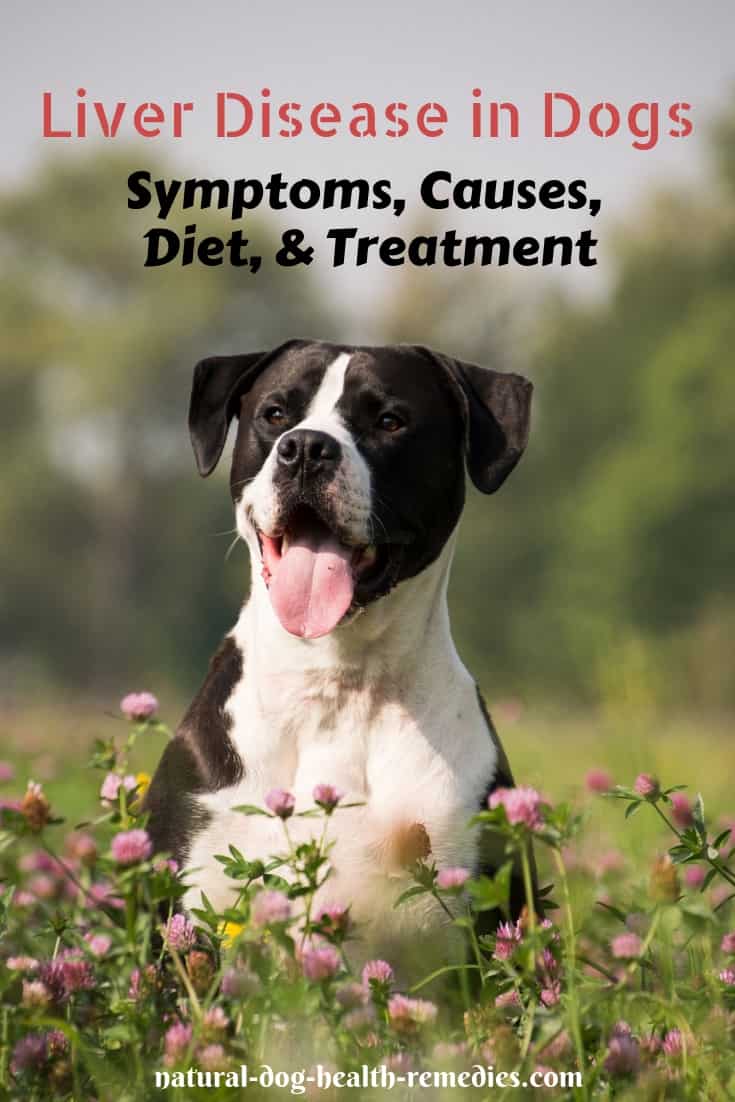Liver Disease in Dogs

Overview
Liver disease in dogs, especially chronic liver inflammation, is unfortunately rather prevalent. Chronic liver inflammation is often called chronic-active hepatitis. It is a chronic disease but the dogs tend to suffer repeated flare-ups that resemble acute liver disease.
The liver is a large organ and is one of the most important organs that plays a significant role in a number of different physiological processes.
As the liver performs so many diverse functions, any liver disease in dogs can have a huge negative impact on their overall health.
Why Do Dogs Get Liver Disease?
There are various possible reasons as to why a dog gets liver disease. For example:
- Since the liver metabolizes a lot of chemicals and toxins, excessive amounts of some chemicals and toxins can put a huge burden on the liver and can eventually lead to liver problems.
Some substances that contain problematic chemicals and toxins include flea control products, herbicides and pesticides, as well as toxic amounts of lead, arsenic, phosphorus, iron, and selenium.
- Prolonged and excessive use of some medications can also cause liver disease in dogs.
Such medications include corticosteroids, antibiotics, antifungals, worming medications, diuretics, NSAIDs, epilepsy medications (anticonvulsants), and testosterone preparations.
- Various viral, fungal or bacterial infections (e.g. leptospirosis, coccidioidomycosis, hepatitis caused by adenovirus).
- Heatstroke.
- Physical injuries (e.g. a blow by a car).
- Congenital disease (e.g. liver shunt, and copper-associated hepatitis).
- Other physical problems, such as anemia, Cushing's disease, heartworm and heart disease, pancreatitis, and cancer.
Stage of Liver Disease in Dogs
There are four stages of liver disease in dogs.
Inflammation (Hepatitis)
Hepatitis, which in effect means an "inflamed liver", is the first stage.
Dogs with first stage liver disease don't show any symptoms. If diagnosed in this early stage, usually they can recover with medications.
Fibrosis
If a dog with hepatitis doesn't receive timely treatment, the liver disease proceeds to the second stage, called fibrosis.
In this stage, scarring of the liver starts to occur.
Scarring causes a number of problems. First, blood cannot flow through the liver smoothly due to the scarring.
Second, as a result of poor blood circulation through the liver, it is more difficult for the liver to detoxify the blood. This in turn results in toxin buildup in the blood.
Dogs with fibrosis also show very few or no symptoms at all, although if they have blood works done, the results will show abnormal numbers.
Fibrosis is still reversible if timely treatment is given.
Cirrhosis
The third stage of liver disease is cirrhosis. In this stage, about 75 to 80 percent of the liver is damaged beyond repair.
A dog with cirrhosis starts to show symptoms and treatment cannot heal the liver. Treatment at this stage is only to slow down or prevent the liver from deteriorating further.
Liver Failure
If no treatment is received up to this point, a dog with liver disease will enter the final stage, which is liver failure.
When the liver fails, it means it is no longer functioning. Understandably, it is a life-threatening condition.
You will notice more serious symptoms in the dog. If no treatment is given, the dog might become comatose and die.
Symptoms of Liver Disease in Dogs
The symptoms are as diverse as the functions of the liver. As mentioned above, in the early stages, the dog shows few subtle symptoms or no symptoms at all.
In later stages, some classical symptoms include:
- GI imbalances (e.g. diarrhea, constipation, vomiting, bloating, bad breath)
- Loss of appetite
- Weight loss
- Excess urination
- Excess thirst
- Excessive drooling
- Personality change (e.g. depression, lethargy, anxiety, loss of enthusiasm for life)
- Skin problems (e.g. acne, psoriasis, rashes)
- Jaundice (a yellowing of the skin and the whites of the eyes)
- Seizures (in advanced stages of the disease)

Diagnosis
As you can see, many of the symptoms of liver disease are similar to those of other diseases. Therefore, in order to make a diagnosis of liver disease, a vet will have to carry out a number of diagnostic procedures.
Common diagnostic methods involve:
- Blood tests to check on a number of different aspects of a dog's blood, including red and white blood cell levels as well as the levels of certain enzymes. For example, the enzymes alanine aminotransferase (ALT) and alkaline phosphatase (ALP) often appear in elevated amounts in a dog suffering from liver disease.
- Bile acid test
- Urinalysis
- Radiology and ultrasound
Conventional Treatment
 Obviously, treatment for canine liver disease depends on the cause of the condition.
Obviously, treatment for canine liver disease depends on the cause of the condition.
For example, if injury as a result of physical trauma was the cause, hospitalization while the dog recovers from the impact of the trauma may be all that is required.
When, on the other hand, the liver disease is caused by another medical condition such as cancer or anemia, these additional underlying medical conditions will need to be dealt with as well.
In any case, a dog with liver disease should be under professional veterinary care.
Rest is recommended as it facilitates liver regeneration. If a dog is dehydrated, fluids will be given intravenously.
Sadly though, for many chronic liver diseases, conventional medicine seems to have little effect.
Dog Liver Disease Diet
If your dog has liver disease, it is important to pay attention to his diet.
A liver disease diet should preferably be home cooked and should contain:
- High-quality animal protein sources (e.g. fish, chicken meat, low-fat plain yogurt, cottage cheese, eggs, dairy products)
- Complex carbohydrates (e.g. oatmeal, barley, pumpkin puree)
- Healthy fat (e.g. Omega-3 fatty acids).
A sample dog liver disease diet may look like this:
- 50% chicken meat, cottage cheese, egg
- 30% barley
- 20% plain pumpkin puree
- Supplemented with Omega-3 fatty acids (e.g. salmon oil) and calcium
How much to feed depends of course on the weight and activity level of your dog. As a general rule of thumb, a dog should eat about 2-3 percent of his body weight a day.
Calcium in the form of calcium carbonate should be given at 900 mg per every pound of food fed. Fish oil such as salmon oil should be given at 1000 mg per 20 pounds of the dog's body weight per day.
Why a Raw Diet is No Good for Dogs with Liver Disease
Raw meat may contain bacteria (e.g. E.coli, Salmonella), which usually do not pose a problem for a healthy dog.
For a dog with liver disease, the story is different. Since the liver is responsible for filtering bacteria, a dog with a liver that is not functioning properly is at a higher risk of getting food-borne bacterial infection.
Therefore, if your dog is unfortunately diagnosed with liver disease, do not raw feed your dog.

Natural Remedies for Liver Health in Dogs
Natural remedies such as herbs and homeopathy can also be used to help treat liver disease in dogs. If your dog has been diagnosed with liver disease, therefore, consult with a holistic veterinarian and try to work out a holistic treatment program for your dog.
Get more information on some such natural remedies from this page.
Merck Vet Manual
Management of liver disease in dogs and cats
L. Olson, Raw and Natural Nutrition for Dogs: The Definitive Guide to Homemade Meals (North Atlantic Books, 2010).
W.J. Dodds, D.R. Laverdue, Canine Nutrigenomics - The New Science of Feeding Your Dog for Optimum Health (Dogwise Publishing, 2015).





